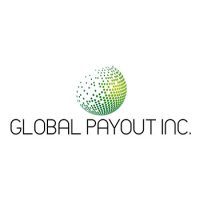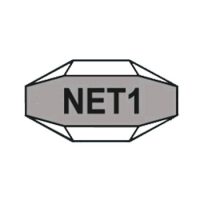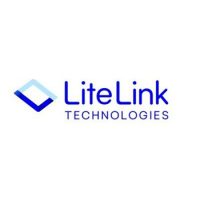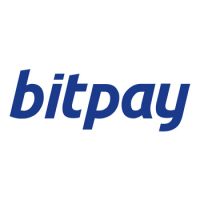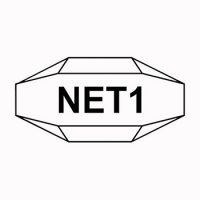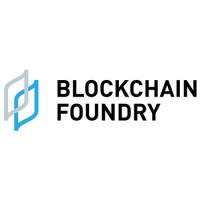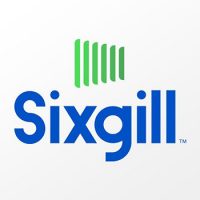Blockchain
Hut 8 Reports Operating and Financial Results for Q1 2022

Hut 8 Mining Corp. (Nasdaq: HUT) (TSX: HUT) (“Hut 8” or the “Company”), one of North America’s largest, innovation-focused digital asset mining pioneers, supporting open and decentralized systems since 2018, is pleased to announce its financial results for the quarter ended March 31, 2022. All dollar figures are in Canadian Dollars (“CAD”), unless otherwise stated.
“We made measurable progress in the first quarter of 2022, significantly advancing our diversification strategy by completing the acquisition of five data centres and cementing our role as the only digital asset mining company that is delivering the high performance computing infrastructure to support companies in the blockchain and Web 3.0 spaces,” said Jaime Leverton, CEO of Hut 8. “Thanks to our leadership role in the digital asset mining industry backed by our HODL strategy, we are uniquely positioned to seize opportunities in this burgeoning industry as they arise.”
“Our mining operations, thanks in large part to the installation of nearly 9,600 new MicroBT miners, continued to deliver strong results during the first quarter,” said Shane Downey, CFO of Hut 8. “We realized strong revenue and profitability while advancing our HODL strategy, and are confident that we have the fundamentals in place to serve us for the long term.”
-
- Revenue increased 67% to $53.3 million during the quarter ended March 31, 2021, with our self-mining operations generating $49.3 million of revenue on 942 Bitcoin mined.
- The Company installed 9,592 new MicroBT M30S, M30S+, and M31S+ miners at the Drumheller and Medicine Hat facilities in Alberta. The installation of these miners brought the Company’s operating capacity to 2.54 EH/s, an increase of 27% from December 31, 2021.
- The acquisition of TeraGo Inc.’s cloud services and colocation data centre business was completed on January 31, 2022, establishing the Company as a leader in high performance computing, with five data centres across Ontario and British Columbia and approximately 400 commercial customers. The high performance computing operation currently contributes monthly recurring revenue of approximately $1.6 million.
- Revenue increased 67% to $53.3 million during the quarter ended March 31, 2021, with our self-mining operations generating $49.3 million of revenue on 942 Bitcoin mined.
|
(i) Non-IFRS measure – see “Non-IFRS Measures” section below. |
- The Company expanded its management team with the appointment of Erin Dermer as Vice President Marketing, Communications, and Public Affairs; James Beer as Senior Vice President Operations; and Josh Rayner as Vice President Sales. Collectively, these individuals bring more than 45 years of leadership of experience to the Company to support the growth of its operations.
|
|
Three Months Ended |
|||||
|
(CAD thousands, except per share amounts) |
2022 |
2021(i) |
||||
|
Operating results |
||||||
|
Digital assets mined |
942 |
539 |
||||
|
Financial results |
||||||
|
Total revenue |
$ 53,333 |
$ 31,983 |
||||
|
Net income |
55,708 |
19,134 |
||||
|
Mining profit (ii) |
32,906 |
17,498 |
||||
|
Adjusted EBITDA (ii) |
27,109 |
16,181 |
||||
|
Earnings Per Share |
||||||
|
Net income – basic |
$ 0.33 |
$ 0.17 |
||||
|
Net income – diluted |
$ 0.31 |
$ 0.15 |
||||
|
(i) Non-IFRS measure – see “Non-IFRS Measures” section below. (ii) Certain comparative figures have been restated where necessary to conform with current period presentation. |
||||||
|
As At |
||||||
|
(CAD thousands) |
March 31, |
December 31, 2021 |
||||
|
Financial position |
||||||
|
Cash |
$ 78,524 |
$ 140,127 |
||||
|
Total digital assets |
367,600 |
323,946 |
||||
|
Total assets |
753,443 |
720,709 |
||||
|
Total liabilities |
102,886 |
154,741 |
||||
|
Total shareholder’s equity |
650,557 |
565,968 |
||||
- Revenue for the quarter ended March 31, 2022, was $53.3 million compared to $32.0 million in the prior year period. The increase was primarily driven by the Company’s digital asset mining operations, where the Company mined 942 Bitcoin and generated $49.3 million of revenue, versus 539 Bitcoin mined and $30.6 million of revenue in the prior year period. The increase in Bitcoin mined is due to the deployment of incremental higher efficiency miners during the quarter in 2022 compared to the same period in 2021. The increase in revenue due to higher number of Bitcoin mined was partially offset by a decrease in average Bitcoin price, which resulted in average revenue per Bitcoin mined of $52,327 for the quarter compared to $56,692 in the prior year’s quarter. Hosting revenue was $0.8 million for the quarter compared to $1.4 million in the prior year’s quarter. The decrease in hosting revenue is due to a reduced number of hosting clients, as the Company acquired the digital asset mining equipment from one of two historical hosting customers in December 2021.
- The Company’s newly acquired high performance computing operations added $3.3 million of revenue, reflecting two months’ worth of contributions. The Company estimates that recurring revenue from the high performance computing business will increase 15-18% over the course of 2022. Hut 8’s preliminary view is that this acquired business will generate gross margins ranging between 35% and 40%, with opportunities to further optimize margins going forward.
- Cost of revenue consists of site operating costs and depreciation and was $36.9 million for the first quarter of 2022 compared to $19.8 million in the prior year period. Site operating costs consist primarily of electricity costs as well as personnel, network monitoring, software licensing and equipment repair and maintenance costs at our mining and high performance computing operations. Site operating costs for the quarter ended March 31, 2022 were $18.5 million, of which $16.9 million was attributable to our mining operations and $1.6 million was attributable to our high performance computing operations. The average cost of mining each Bitcoin for the first quarter of 2022 was approximately $18,000, compared to approximately $25,900 in the prior year for the same period. The decrease is primarily due to deployment of a larger and significantly more efficient fleet of mining equipment. Depreciation expense increased to $18.4 million during the first quarter of 2022 compared to $5.8 million in the same period of 2021, driven by the increased number of miners deployed during the quarter as well as $0.7 million of additional depreciation from our newly acquired high performance computing operations.
- Net income was $55.7 million and net income per share was $0.33 for the three months ended March 31, 2022, compared with net income of $19.1 million and net income per share of $0.17 for the same period in 2021. The change was driven by the higher revenue and non-cash gain on revaluation of warrant liability recorded in first quarter of 2022 partially offset by lower general and administrative expenses incurred in first quarter of 2021.
- Adjusted EBITDA(i) (a non-IFRS measure) increased by $10.9 million for the quarter ended March 31, 2022, compared to the same period in 2021. The increase was driven by higher digital asset mining profit(i), partially offset by higher general and administrative expenses incurred to support the growth in the Company’s operations.
- Digital assets consist of Bitcoin, which had a balance of 6,460 Bitcoin and a market value of $367.6 million as of March 31, 2022. This balance consisted of 4,460 Bitcoin held in custody and 2,000 held under lending arrangements.
This press release makes reference to certain measures that are not recognized under IFRS and do not have a standardized meaning prescribed by IFRS. They are therefore not necessarily comparable to similar measures presented by other companies. The Company uses non-IFRS measures including “Adjusted EBITDA” and “Mining profit” as additional information to complement IFRS measures by providing further understanding of the Company’s results of operations from Management’s perspective.
The following tables reconcile non-IFRS measures used by the Company to analyze the operational performance of Hut 8, to their nearest IFRS measure and should be read in conjunction with the unaudited condensed consolidated interim statement of operations and comprehensive income (loss) and unaudited condensed consolidated interim statement of cash flows included in the unaudited condensed consolidated interim financial statements for the quarter ended March 31, 2022.
“Mining profit” represents gross profit (revenue less cost of revenue), excluding depreciation and revenue and site operating costs directly attributable to hosting services. Mining profit shows profitability of the Company’s core digital asset mining operation, without the impact of non-cash depreciation expense.
The following table reconciles Gross profit to our non-IFRS measure, Mining profit:
|
For the three months ended March 31 |
2022 |
2021 |
|
Gross profit |
$ 16,455 |
$ 12,207 |
|
Add (deduct): |
||
|
Revenue from hosting |
(751) |
(1,426) |
|
Revenue from high performance computing |
(3,290) |
– |
|
Site operating costs attributable to hosting and high performance computing |
2,127 |
915 |
|
Depreciation |
18,365 |
5,802 |
|
Mining profit |
$ 32,906 |
$ 17,498 |
|
(i) Non-IFRS measure – see “Non-IFRS Measures” section below. |
“Adjusted EBITDA” represents EBITDA (net income or loss excluding net finance income or expense, income tax or recovery, depreciation, and amortization) adjusted to exclude non-cash share-based compensation, fair value gain or loss on revaluation of digital assets, non-recurring impairment charges or reversals of impairment, and costs associated with one-time or non-recurring transactions. Adjusted EBITDA is used to assess profitability without the impact of non-cash accounting policies, capital structure, taxation, and one-time or non-recurring transactions. This performance measure provides a consistent comparable metric for profitability of the Company across time periods.
The following table reconciles net income to our non-IFRS measure, Adjusted EBITDA:
|
For the three months ended March 31 |
2022 |
2021 |
|
Net income |
$ 55,708 |
$ 19,134 |
|
Add (deduct): |
||
|
Net finance expense (income) |
1,292 |
(348) |
|
Depreciation and amortization |
18,594 |
5,802 |
|
Share based payment |
1,299 |
2,756 |
|
Gain on disposition of digital assets |
– |
(182) |
|
Foreign exchange |
711 |
431 |
|
Share based payment taxes withholding |
– |
1,246 |
|
One-time transaction costs |
1,611 |
– |
|
Deferred income tax expense (recovery) |
1,121 |
(13,370) |
|
Sales tax expense |
913 |
712 |
|
Gain on revaluation of warrants liability |
(54,140) |
– |
|
$ 27,109 |
$ 16,181 |
Hut 8 Q1 2022 conference call will commence at 10 a.m. ET, today, May 12, 2022. Those wishing to join via telephone should dial in 5 minutes early:
- Within Canada: 1-866-455-3403 access code: 81669575#
- Within the US: 1-866-374-5140 access code: 81669575#
A full list of Hut 8 Mining analyst coverage can be found here.
This press release includes “forward-looking information” and “forward-looking statements” within the meaning of Canadian securities laws and United States securities laws, respectively (collectively, “forward-looking information”). All information, other than statements of historical facts, included in this press release that address activities, events or developments that the Company expects or anticipates will or may occur in the future, including such things as future business strategy, competitive strengths, goals, expansion and growth of the Company’s businesses, operations, plans and other such matters is forward-looking information. Forward-looking information is often identified by the words “may”, “would”, “could”, “should”, “will”, “intend”, “plan”, “anticipate”, “believe”, “estimate”, “expect” or similar expressions. In addition, any statements that refer to expectations, projections or other characterizations of future events or circumstances contain forward-looking information. Specifically, such forward-looking information included in this press release include, but are not limited to, statements with respect to the following: the Company’s position and ability to seize opportunities in the digital asset industry; the Company’s ability to advance the HODL strategy in the long-term; the Company’s growth strategy; estimates of increased recurring revenue from the Company’s high-performance computing business and the amount thereof; and the Company’s estimated margins of the high performance computing business and its ability to optimize margins in the future.
Statements containing forward-looking information are not historical facts, but instead represent management’s expectations, estimates and projections regarding future events based on certain material factors and assumptions at the time the statement was made. Material assumptions include: assumptions regarding the level of demand and financial performance of the digital asset industry, effective tax rates, the U.S./Canadian dollar exchange rate, the expected impact of the COVID-19 pandemic, inflation, access to capital, timing and receipt of regulatory approvals, acquisition and divestiture activities, operational expenses, returns on investments and transaction costs.
Forward-looking information is necessarily based on a number of opinions, assumptions and estimates that, while considered reasonable by Hut 8 as of the date of this press release, are subject to known and unknown risks, uncertainties, assumptions and other factors that may cause the actual results, level of activity, performance or achievements to be materially different from those expressed or implied by such forward-looking information, including but not limited to security and cybersecurity threats and hacks, malicious actors or botnet obtaining control of processing power on the Bitcoin network, further development and acceptance of the Bitcoin network, changes to Bitcoin mining difficulty, loss or destruction of private keys, increases in fees for recording transactions in the Blockchain, erroneous transactions, reliance on a limited number of key employees, reliance on third party mining pool service providers, regulatory changes, classification and tax changes, momentum pricing risk, fraud and failure related to cryptocurrency exchanges, difficulty in obtaining banking services and financing, difficulty in obtaining insurance, permits and licenses, internet and power disruptions, geopolitical events, uncertainty in the development of cryptographic and algorithmic protocols, uncertainty about the acceptance or widespread use of cryptocurrency, failure to anticipate technology innovations, the COVID19 pandemic, climate change, currency risk, lending risk and recovery of potential losses, litigation risk, business integration risk, changes in market demand, changes in network and infrastructure, system interruption, changes in leasing arrangements, and other risks related to the cryptocurrency and data centre business. For a complete list of the factors that could affect the Company, please see the “Risk Factors” section of the Company’s Annual Information Form dated March 17, 2022 and Hut 8’s other continuous disclosure documents which are available on www.sedar.com.
These factors are not intended to represent a complete list of the factors that could affect Hut 8; however, these factors should be considered carefully. There can be no assurance that such estimates and assumptions will prove to be correct. Should one or more of these risks or uncertainties materialize, or should assumptions underlying the forward-looking statements prove incorrect, actual results may vary materially from those described in this press release as intended, planned, anticipated, believed, sought, proposed, estimated, forecasted, expected, projected or targeted and such forward-looking statements included in this press release should not be unduly relied upon. The impact of any one assumption, risk, uncertainty, or other factor on a particular forward-looking statement cannot be determined with certainty because they are interdependent and Hut 8’s future decisions and actions will depend on management’s assessment of all information at the relevant time. The forward-looking statements contained in this press release are made as of the date of this press release, and Hut 8 expressly disclaims any obligation to update or alter statements containing any forward-looking information, or the factors or assumptions underlying them, whether as a result of new information, future events or otherwise, except as required by law.
Neither the Toronto Stock Exchange nor its Regulation Services Provider (as that term is defined in the policies of the Toronto Stock Exchange) accepts responsibility for the adequacy or accuracy of this release.
Blockchain
EAT & BEYOND ANNOUNCES PROPOSED NAME CHANGE AND UPDATED INVESTMENT POLICY
Blockchain
Blocks & Headlines: Today in Blockchain – May 30, 2025 (Fraser Edwards, Kyiv NFT, Spirit Blockchain Capital, Indian eHealth, Hedera)

Blockchain technology and cryptocurrencies continue to redefine industries—from competitive gaming and cultural heritage preservation to corporate finance, healthcare, and alternative tokens. Today’s briefing highlights five pivotal developments shaping the ecosystem: Fraser Edwards’s vision for trust in eSports; Ukraine’s wartime cultural preservation via NFTs; Spirit Blockchain Capital’s Q1 2025 operational report; India’s push for blockchain-enabled electronic health records (EHRs); and the rise of viral altcoins such as UniLabs, Sui, and Hedera Hashgraph. Together, these stories illustrate the themes of trust and identity, preservation and provenance, institutional maturation, public-sector innovation, and token diversification. In this op-ed–style round-up, we distill the essence of each story, cite sources, and offer analysis on how they advance Web3, DeFi, and NFT frontiers.
1. Rebuilding Trust in eSports: Can Blockchain Fix Competitive Integrity?
Source: CCN
Summary:
In a recent CCN interview, veteran trader and eSports investor Fraser Edwards argues that blockchain’s immutable ledgers can restore credibility in the rapidly commercializing world of competitive gaming. According to Edwards, match-fixing scandals and opaque prize-pool distributions have eroded fan confidence. By tokenizing tournament entries and payouts on public blockchains—complete with smart-contract–enforced escrow—organizers can guarantee that prize monies are distributed exactly as advertised, and that no post-match manipulation occurs. Tournament operators in Asia and North America are already piloting Ethereum-based payout dApps, aiming to increase transparency for players and sponsors alike.
Key details & analysis:
-
Smart-contract escrow: Funds are held in a time-locked contract that releases prize money only upon verifiable match results. This prevents disputes over referee decisions or delayed payments.
-
On-chain reputation: Player and team reputations can be tokenized via non-fungible reputation badges that accrue based on fair play and community votes—discouraging cheating.
-
Scalability concerns: High-traffic tournaments may require Layer 2 rollups or alternative chains (e.g., Polygon, Immutable X) to reduce gas costs and latency.
Opinion: Blockchain’s dual promise of provable fairness and programmable finance makes it uniquely suited to eSports. Yet adoption hinges on UX: seamless wallet integrations, minimal transaction fees, and clear regulatory guidance on esports tokens.
2. When Art Meets Blockchain: Ukraine’s Wartime Cultural Preservation
Source: The Kyiv Independent
Summary:
As monuments crumble under artillery fire, Ukrainian curators and technologists are partnering to mint NFTs representing lost or endangered artifacts. The Kyiv Independent reports that the National Art Museum of Ukraine has launched “Project Phoenix,” tokenizing high-resolution 3D scans of sculptures, manuscripts, and paintings. Proceeds from initial sales fund restoration and digital archiving efforts. Each NFT embeds provenance metadata—including GPS coordinates, curator notes, and condition reports—ensuring that future generations can verify authenticity and context, even if the physical artifact is destroyed.
Key details & analysis:
-
Metadata richness: Beyond simple ownership, NFTs store structured metadata—using ERC-721 metadata extensions—that capture curatorial insights and conservation logs.
-
Decentralized archives: IPFS and Arweave are employed to host ultra-high-resolution imagery, with on-chain hashes guaranteeing data integrity.
-
Community engagement: Fractional-NFT drops allow diaspora communities to collectively own tokens, strengthening cultural ties and crowdfunding preservation.
Opinion: Blockchain’s ability to immutable record heritage provides a lifeline for war-torn nations. However, ensuring that local institutions retain governance over metadata edits and future migrations is critical to avoiding “cultural colonialism” by global NFT marketplaces.
3. Spirit Blockchain Capital’s Q1 2025 Highlights: Growth, Investments, and Outlook
Source: GlobeNewswire
Summary:
Spirit Blockchain Capital’s Q1 2025 report benchmarks the firm’s operational milestones and financial performance. Assets under management (AUM) climbed 45% to $1.02 billion, driven by strategic allocations to top-tier Layer 1 and Layer 2 protocols, DeFi liquidity pools, and a newly launched token-index fund. Operating income rose 37%, fueled by management fees and performance incentives. The firm also closed its second blockchain-focused venture fund at $150 million, earmarked for early-stage Web3 projects in gaming, infrastructure, and decentralized identity.
Key details & analysis:
-
Diversification strategy: 60% of AUM in blue-chip cryptocurrencies (Bitcoin, Ethereum); 25% in DeFi (Aave, Uniswap, Lido); 15% in tokenized commodities and NFTs.
-
Fund performance: The flagship fund delivered a 9.8% return in Q1, outperforming the 6.2% benchmark set by the Bloomberg Galaxy Crypto Index.
-
Venture investments: Early stakes in zero-knowledge proof startups and decentralized storage platforms signal confidence in scalability and privacy innovations.
Opinion: Spirit’s robust growth and disciplined diversification mirror institutional maturation in the blockchain asset management space. As regulatory clarity improves, expect further inflows from endowments, pensions, and family offices.
4. Blockchain EHRs in India: The Next Digital Health Revolution
Source: ORF
Summary:
The Observer Research Foundation (ORF) details India’s pioneering pilot of blockchain-backed electronic health records (EHRs) in the state of Andhra Pradesh. By leveraging a permissioned Hyperledger Fabric network, the initiative ensures that patient records—from vaccination histories to diagnostic imaging—are securely shared across hospitals, clinics, and pharmacies. Patients control access via digital identities anchored to India’s Aadhaar system, granting temporal permissions for data viewing and preventing unauthorized sharing.
Key details & analysis:
-
Interoperability: HL7 FHIR standards are mapped to on-chain transactions, enabling seamless data exchange with existing hospital information systems (HIS).
-
Privacy safeguards: Off-chain storage of PHI (Protected Health Information) is encrypted with patient-held keys; only hashed pointers reside on-chain to ensure immutability without exposing sensitive data.
-
Regulatory alignment: The pilot aligns with India’s draft Digital Health Act, which emphasizes data sovereignty and patient consent frameworks.
Opinion: Blockchain EHRs can democratize healthcare access in a populous nation—but success depends on user-friendly portals, robust identity verification, and contingency plans for network outages in rural areas.
5. The Hottest Viral Altcoins of 2025: UniLabs, Sui, and Hedera Lead the Pack
Source: TronWeekly
Summary:
According to TronWeekly, the altcoin landscape in 2025 is dominated by three viral tokens: UniLabs (UNI-L), Sui (SUI), and Hedera Hashgraph (HBAR). UniLabs, a governance token for a decentralized laboratory network, saw a 1,200% year-to-date surge on news of its AI-driven drug-discovery partnership. Sui’s Move-based smart-contract platform gained traction for sub-second finality and low gas fees, with total value locked (TVL) surpassing $2 billion. Hedera’s HBAR continues its enterprise pivot, securing multi-year agreements with global brands for identity verification and supply-chain tracking.
Key details & analysis:
-
UniLabs use case: Token holders vote on research grants and share in royalty revenues from patented compounds developed on-chain.
-
Sui performance: With a novel object model and horizontal sharding, Sui supports over 3,000 TPS (transactions per second) without compromising on decentralization.
-
Hedera enterprise: The Governing Council—comprising Boeing, Google, and LG—bolsters confidence in HBAR’s governance model and paves the way for compliant enterprise deployments.
Opinion: These tokens exemplify the diversification of blockchain applications. Investors should assess not only market hype but also protocol fundamentals—developer activity, economic incentives, and real-world adoption.
Cross-Story Trends & Key Takeaways
-
Trust & Transparency at the Core
From esports prize-pool ledgers to wartime NFT archives and permissioned health records, blockchain’s immutability fosters verifiable trust—a prerequisite for mainstream adoption across sectors. -
Institutional & Public-Sector Innovation
Spirit Blockchain Capital’s fund growth and India’s EHR pilot signal that both private and government entities view blockchain as a strategic infrastructure, not just speculative assets. -
Vertical Specialization Fuels Token Growth
Viral altcoins like UniLabs, Sui, and Hedera thrive by addressing niche use-cases—governance in biotech, scalable DeFi rails, and enterprise identity—underscoring the importance of purpose-built protocols. -
Metadata & Provenance Drive NFTs Beyond Art
Ukraine’s cultural NFTs demonstrate how rich on-chain metadata can preserve heritage, while esports applications show that reputation tokens can enforce fair-play credentials. -
Ecosystem Maturation Requires UX & Governance
Across all stories, user experience—wallet onboarding, identity verification, metadata curation—and robust governance frameworks (tokenomics, regulatory alignment) emerge as decisive factors in blockchain’s next wave.
Conclusion
Today’s blockchain headlines reveal a maturing ecosystem where trust, transparency, and targeted innovation unlock new frontiers—from safeguarding digital heritage amid conflict to revolutionizing healthcare and sports. As institutional players allocate billions, and public-sector pilots chart regulatory pathways, the fate of tomorrow’s Web3 landscape hinges on seamless UX, rigorous governance, and demonstrable real-world utility. Stay tuned for tomorrow’s Blocks & Headlines, where we’ll continue tracking the trends, tokens, and technologies that define the blockchain revolution.
The post Blocks & Headlines: Today in Blockchain – May 30, 2025 (Fraser Edwards, Kyiv NFT, Spirit Blockchain Capital, Indian eHealth, Hedera) appeared first on News, Events, Advertising Options.
Blockchain
Kyrgyz Republic to launch USDKG, a gold-backed stablecoin pegged to the U.S. Dollar, in Q3 2025

USDKG
-

 Blockchain Press Releases2 days ago
Blockchain Press Releases2 days agoRain Expands Support to Solana, Tron, and Stellar, Enabling More Partners to Launch Stablecoin-powered Card Programs
-

 Blockchain Press Releases4 days ago
Blockchain Press Releases4 days agoFlipster Reveals Middle East Expansion Plans and Appoints Regional Leadership to Bolster Crypto Trading
-

 Blockchain Press Releases4 days ago
Blockchain Press Releases4 days agoCoinW Teams Up with Superteam Europe to Conclude Solana Hackathon and Accelerate Web3 Innovation in Europe
-

 Blockchain4 days ago
Blockchain4 days agoBlocks & Headlines: Today in Blockchain – May 27, 2025 Featuring Blockchain.com, Bilal Bin Saqib, XRP Ledger, Unstoppable Domains, ReNEW, MEXC Ventures
-

 Blockchain5 days ago
Blockchain5 days agoBlocks & Headlines: Today in Blockchain – May 26, 2025 (Lightchain AI, Cetus Hack, Bilal Bin Saqib, The Blockchain Group)
-

 Blockchain Press Releases2 days ago
Blockchain Press Releases2 days agoBybit Secures MiCAR License in Austria, Opens European Headquarters in Vienna with Strategic Expansion Plan
-

 Blockchain Press Releases5 days ago
Blockchain Press Releases5 days agoAB Charity Foundation X AB Blockchain Join Forces to Advance the Global “Tech for Good” Mission
-

 Blockchain5 days ago
Blockchain5 days agoFinfra Astra Fintech Launches Canada’s First Solana Accelerator in Partnership with MixMarvel — Named ‘AMS’


















